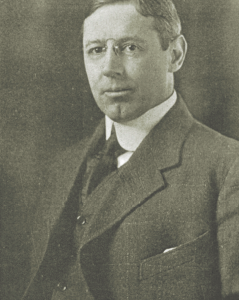
Preservation in Quotes: Time to Revive the Athenian Oath?
June 6, 2019 | Anthony C. Wood, Founder & Chair of the Archive Project
Deep in Albert Bard’s papers, one can still find his annotated copy of the August 1, 1913 Report of the Mayor’s Billboard Advertising Commission of the City of New York. As the very active secretary of that Commission, Bard played a key role in drafting the report. He is credited with formulating its recommendation that the Constitution of the State of New York be amended to give cities the right to regulate private property on aesthetic grounds. Ultimately, in 1956, cities in New York State would receive such authority through the passage of the Bard Act. That enabling legislation empowered New York City to enact its Landmarks Law.
But back to the prologue in 1913. Bard’s copy of the Report includes some notes and articles which he clipped from newspapers. One of those taped clippings is the Athenian Oath:
“We will never bring disgrace to this, our city, by any act of dishonesty or cowardice, nor ever desert our suffering comrades in the ranks. We will fight for the ideals and sacred things of the city, both alone and with many. We will revere and obey the city’s laws and do our best to incite a like respect and reverence in those above us who are prone to annul or set them naught. We will strive unceasingly to quicken the public sense of civic duty. Thus, in all these ways, we will transmit this city not only not less, but greater and more beautiful than it was transmitted to us.” (The underlining is courtesy of Bard.)
The oath, also known as the Ephebic Oath, is said to be the one taken by young men in classical Athens as they became citizens. Fiorello La Guardia, upon being sworn in as mayor in 1934, paraphrased the oath, and it appeared the next morning as “Oath of the Young Men of Athens” on page one of The New York Times. The Oath has been embraced by educational institutions, and for obvious reasons, has resonated with civic organizations.
Observing the current dramatic changes to New York City’s physical appearance, one has to wonder whether we are transmitting this city “not only not less, but greater and more beautiful than it was transmitted to us” to future generations? Is it time to dust off the old Oath and rebrand it as “Oath of the Young People of New York City?” For that matter, why limit it to young people?
The Oath clearly reflects the values cherished by Albert Bard and embraced by today’s preservationists. By preserving and restoring New York’s landmarks and historic neighborhoods, and by making sure that if they must change, that change is appropriate, preservationists are indeed working overtime to transmit New York “not only not less, but greater and more beautiful than it was transmitted to us” to New Yorkers yet-to-come. Imagine how different New York City would look if all those involved in shaping the City would honor that oath.




